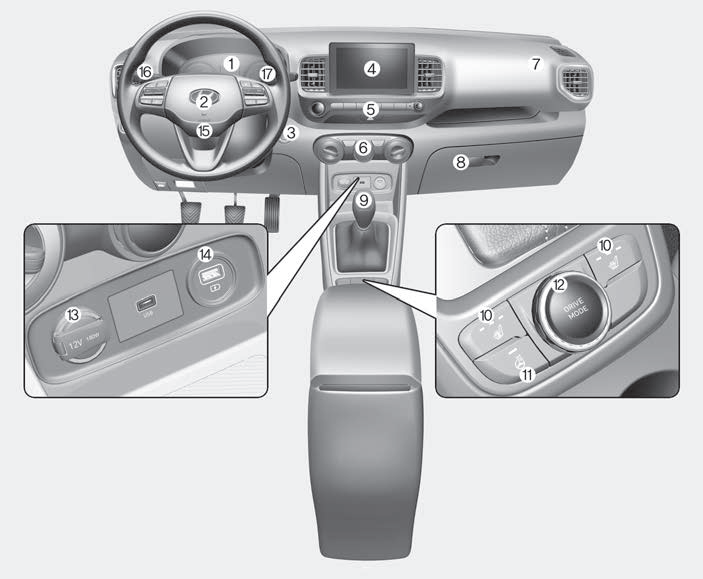Hyundai Venue: Tires and Wheels / Check Tire Inflation Pressure
Check your tires, including the spare tire, once a month or more.
How to check
Use a good quality tire pressure gauge to check tire pressure. You can not tell if your tires are properly inflated simply by looking at them. Radial tires may look properly inflated when they are underinflated.
Remove the valve cap from the tire valve stem. Press the tire gauge firmly onto the valve to get a pressure measurement. If the cold tire inflation pressure matches the recommended pressure on the tire label located on the driver’s side center pillar or in this manual. No further adjustment is necessary. If the pressure is low, add air until you reach the recommended pressure. Make sure to put the valve caps back on the valve stems. Without the valve cap, dirt or moisture could get into the valve core and cause air leakage. If a valve cap is missing, install a new one as soon as possible.
If you overfill the tire, release air by pushing on the metal stem in the center of the tire valve. Recheck the tire pressure with the tire gauge. Be sure to put the valve caps back on the valve stems. Without the valve cap, dirt or moisture could get into the valve core and cause air leakage. If a valve cap is missing, install a new one as soon as possible.
A cold tire means the vehicle has been sitting for 3 hours and driven for less than 1 mile (1.6 km) in that 3 hour period.
Allow the tire to cool before measuring the inflation pressure. Always be sure the tire is cold before inflating to the recommended pressure.
 Recommended Cold Tire Inflation Pressures
Recommended Cold Tire Inflation Pressures
All tire pressures (including the spare) should be checked when the tires are
cold. “Cold tires” means the vehicle has not been driven for at least three hours
or has been driven for less than one mile (1...
 Tire Rotation
Tire Rotation
To equalize tread wear, HYUNDAI recommends that the tires be rotated according
to the maintenance schedule or sooner if irregular wear develops.
During rotation, check the tires for correct balance...
Other information:
Hyundai Venue (QX) (2020-2025) Service Manual: Crash Pad Lower Panel. Repair procedures
Replacement • Put on gloves to prevent hand injuries. • When removing with a flat-tip screwdriver or remover, wrap protective tape around the tools to prevent damage to components...
Hyundai Venue (QX) (2020-2025) Owners Manual: Limitations of the System
Forward Collision-Avoidance Assist system is designed to monitor the vehicle ahead in the roadway through camera recognition to warn the driver that a collision is imminent, and if necessary, apply emergency braking. In certain situations, the camera may not be able to detect the vehicle ahead...
Categories
- Manuals Home
- 1st Generation Venue Owners Manual
- 1st Generation Venue Service Manual
- Liftgate
- System Setting and Activation
- Immobilizer System
- New on site
- Most important about car
Instrument Panel Overview

1. Instrument cluster
2. Horn
3. Key ignition switch/ Engine Start/Stop button
4. Infotainment system
5. Hazard warning flasher switch
